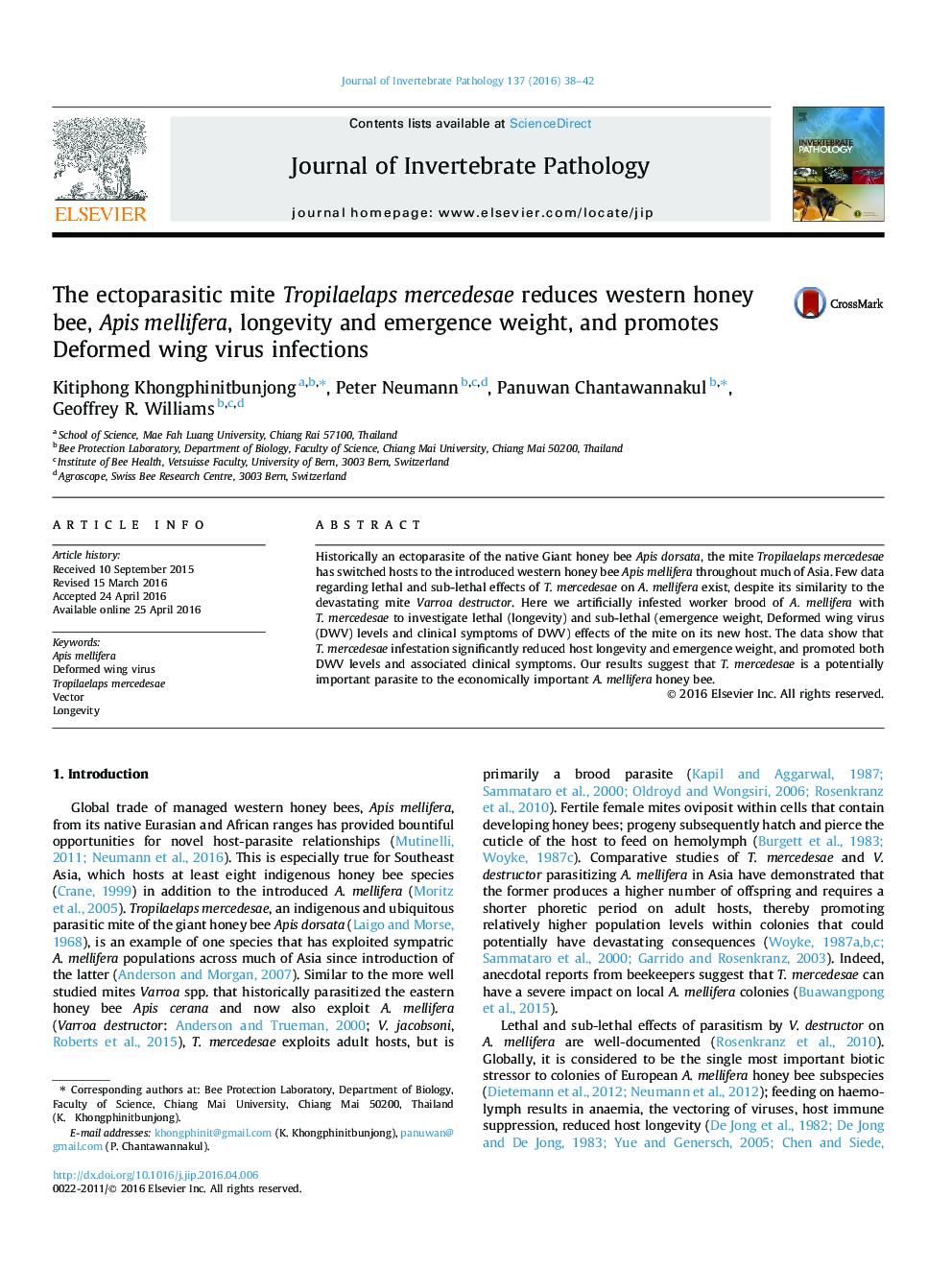| Article ID | Journal | Published Year | Pages | File Type |
|---|---|---|---|---|
| 4557551 | Journal of Invertebrate Pathology | 2016 | 5 Pages |
•Apis mellifera worker brood were infested with Tropilaelaps mercedesae.•Mite infestation reduces Apis mellifera host longevity and emergence weight.•Mite infestation promotes Deformed wing virus levels and associated clinical symptoms.•Tropilaelaps mercedesae appears to be an important parasite to A. mellifera honey bees.
Historically an ectoparasite of the native Giant honey bee Apis dorsata, the mite Tropilaelaps mercedesae has switched hosts to the introduced western honey bee Apis mellifera throughout much of Asia. Few data regarding lethal and sub-lethal effects of T. mercedesae on A. mellifera exist, despite its similarity to the devastating mite Varroa destructor. Here we artificially infested worker brood of A. mellifera with T. mercedesae to investigate lethal (longevity) and sub-lethal (emergence weight, Deformed wing virus (DWV) levels and clinical symptoms of DWV) effects of the mite on its new host. The data show that T. mercedesae infestation significantly reduced host longevity and emergence weight, and promoted both DWV levels and associated clinical symptoms. Our results suggest that T. mercedesae is a potentially important parasite to the economically important A. mellifera honey bee.
Graphical abstractThe mite Tropilaelaps mercedesae reduces western honey bee, Apis mellifera, host longevity and emergence weight, and promotes both Deformed wing virus levels and associated clinical symptoms. This suggests that this mite is a potentially important parasite to A. mellifera.Figure optionsDownload full-size imageDownload as PowerPoint slide
